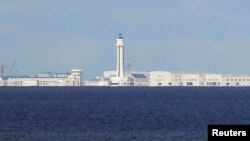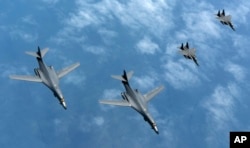While attention in Asia has been distracted by the North Korean nuclear crisis in the past year, China has continued to install high-frequency radar and other facilities that can be used for military purposes on its man-made islands in the South China Sea, a U.S. think tank said Thursday.
China has worked on facilities covering 72 acres (29 hectares) of the Spratly and Paracel islands, territory contested with several other Asian nations, according to the Asia Maritime Transparency Initiative of Washington's Center for Strategic and International Studies. The report cited satellite images.
The United States and its allies oppose China's building of artificial islands in the South China Sea and their militarization, given concerns Beijing plans to use them to deny access to strategic routes.
The report said that in the last several months China had constructed what appeared to be a new high-frequency radar array at the northern end of Fiery Cross Reef in the Spratlys.
Subi Reef had seen tunnels completed that were most likely for ammunition storage and another radar antenna array and radar domes, the report said.
Construction on Mischief Reef included underground storage for ammunition and hangars, missile shelters and radar arrays.
Helipad, wind turbines, radar
Smaller-scale work had continued in the Paracel Islands, including a new helipad and wind turbines on Tree Island and two large radar towers on Triton Island.
It said the latter were especially important as waters around Triton had been the scene of recent incidents between China and Vietnam and multiple U.S. freedom-of-navigation operations, which the U.S. Navy has used to assert what it sees as its right to free passage in international waters.
Woody Island, China's military and administrative headquarters in the South China Sea, saw two first-time air deployments "that hint at things to come at the three Spratly Island air bases farther south," the report said.
At the end of October, the Chinese military released images showing J-11B fighters at Woody Island for exercises, while on November 15, AMTI spotted what appeared to be Y-8 transport planes, a type that can be configured for electronic surveillance.
The Pentagon has conducted several patrols near Chinese-held South China Sea territory this year, even as it has sought China's help to press North Korea to give up its nuclear weapons program.
On Tuesday, U.S. Secretary of State Rex Tillerson reiterated a call for freeze in China's island building and said it was unacceptable to continue its militarization.














